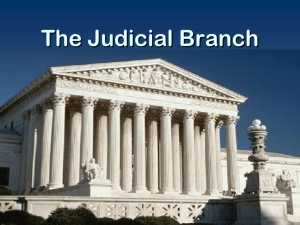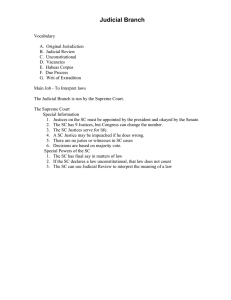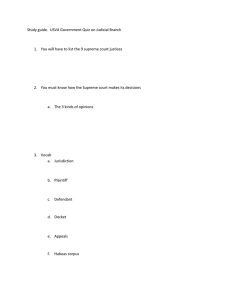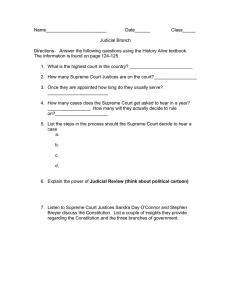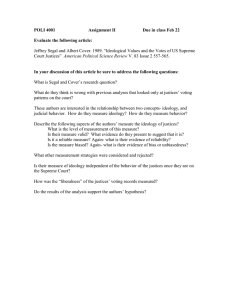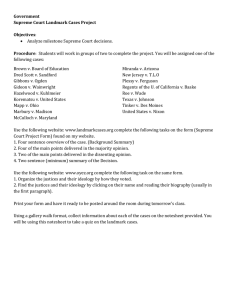How the Supreme Court Works: A Guide
advertisement
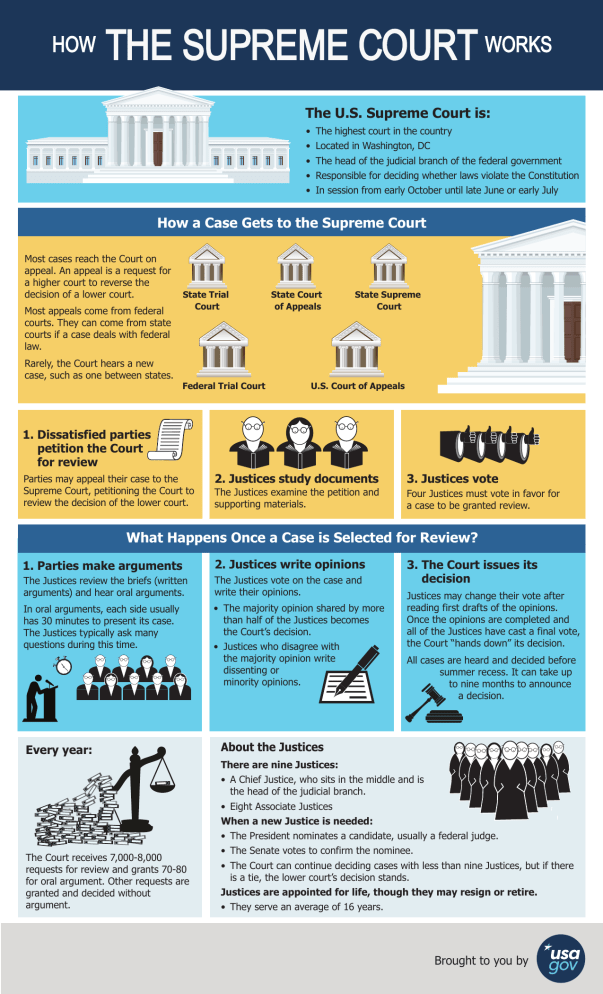
HOW THE SUPREME COURT WORKS The U.S. Supreme Court is: • • • • • The highest court in the country Located in Washington, DC The head of the judicial branch of the federal government Responsible for deciding whether laws violate the Constitution In session from early October until late June or early July How a Case Gets to the Supreme Court Most cases reach the Court on appeal. An appeal is a request for a higher court to reverse the decision of a lower court. Most appeals come from federal courts. They can come from state courts if a case deals with federal law. Rarely, the Court hears a new case, such as one between states. State Trial Court Federal Trial Court State Court of Appeals State Supreme Court U.S. Court of Appeals 1. Dissatisfied parties petition the Court for review Parties may appeal their case to the Supreme Court, petitioning the Court to review the decision of the lower court. 2. Justices study documents The Justices examine the petition and supporting materials. 3. Justices vote Four Justices must vote in favor for a case to be granted review. What Happens Once a Case is Selected for Review? 1. Parties make arguments 2. Justices write opinions The Justices review the briefs (written arguments) and hear oral arguments. The Justices vote on the case and write their opinions. In oral arguments, each side usually has 30 minutes to present its case. The Justices typically ask many questions during this time. • The majority opinion shared by more than half of the Justices becomes the Court’s decision. • Justices who disagree with the majority opinion write dissenting or minority opinions. 3. The Court issues its decision Justices may change their vote after reading first drafts of the opinions. Once the opinions are completed and all of the Justices have cast a final vote, the Court “hands down” its decision. All cases are heard and decided before summer recess. It can take up to nine months to announce a decision. Every year: About the Justices The Court receives 7,000-8,000 requests for review and grants 70-80 for oral argument. Other requests are granted and decided without argument. There are nine Justices: • A Chief Justice, who sits in the middle and is the head of the judicial branch. • Eight Associate Justices When a new Justice is needed: • The President nominates a candidate, usually a federal judge. • The Senate votes to confirm the nominee. • The Court can continue deciding cases with less than nine Justices, but if there is a tie, the lower court’s decision stands. Justices are appointed for life, though they may resign or retire. • They serve an average of 16 years. Brought to you by
